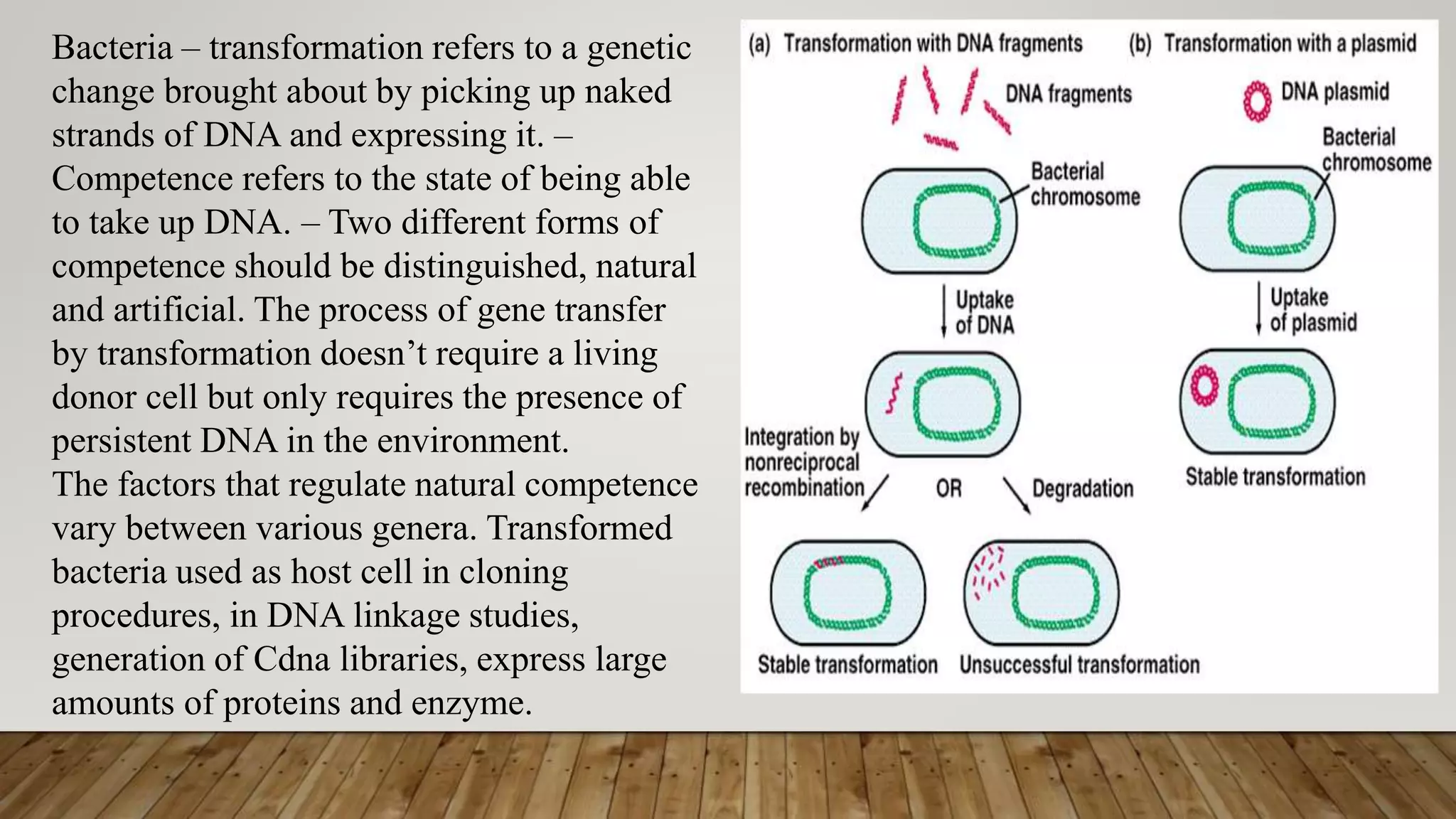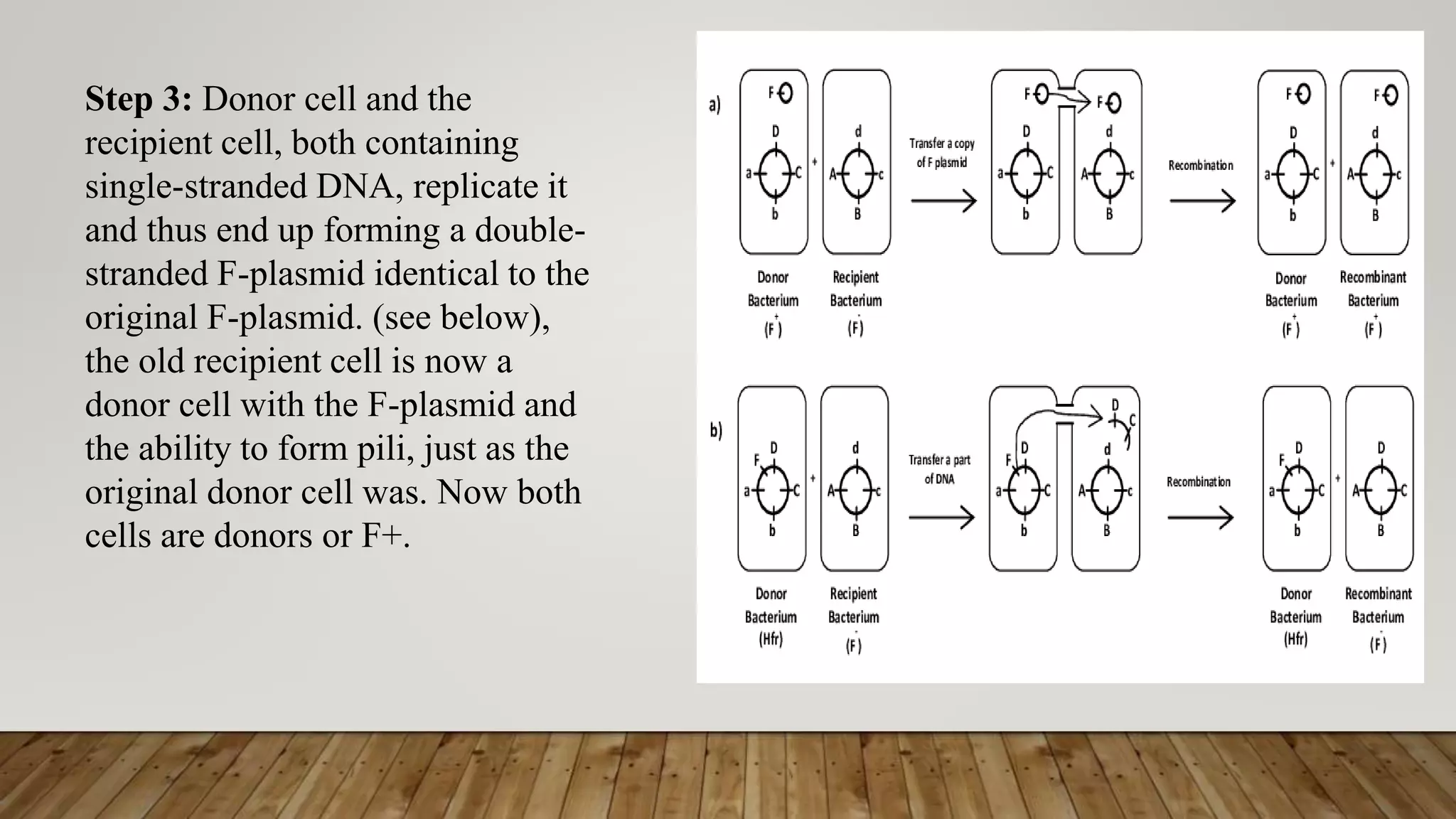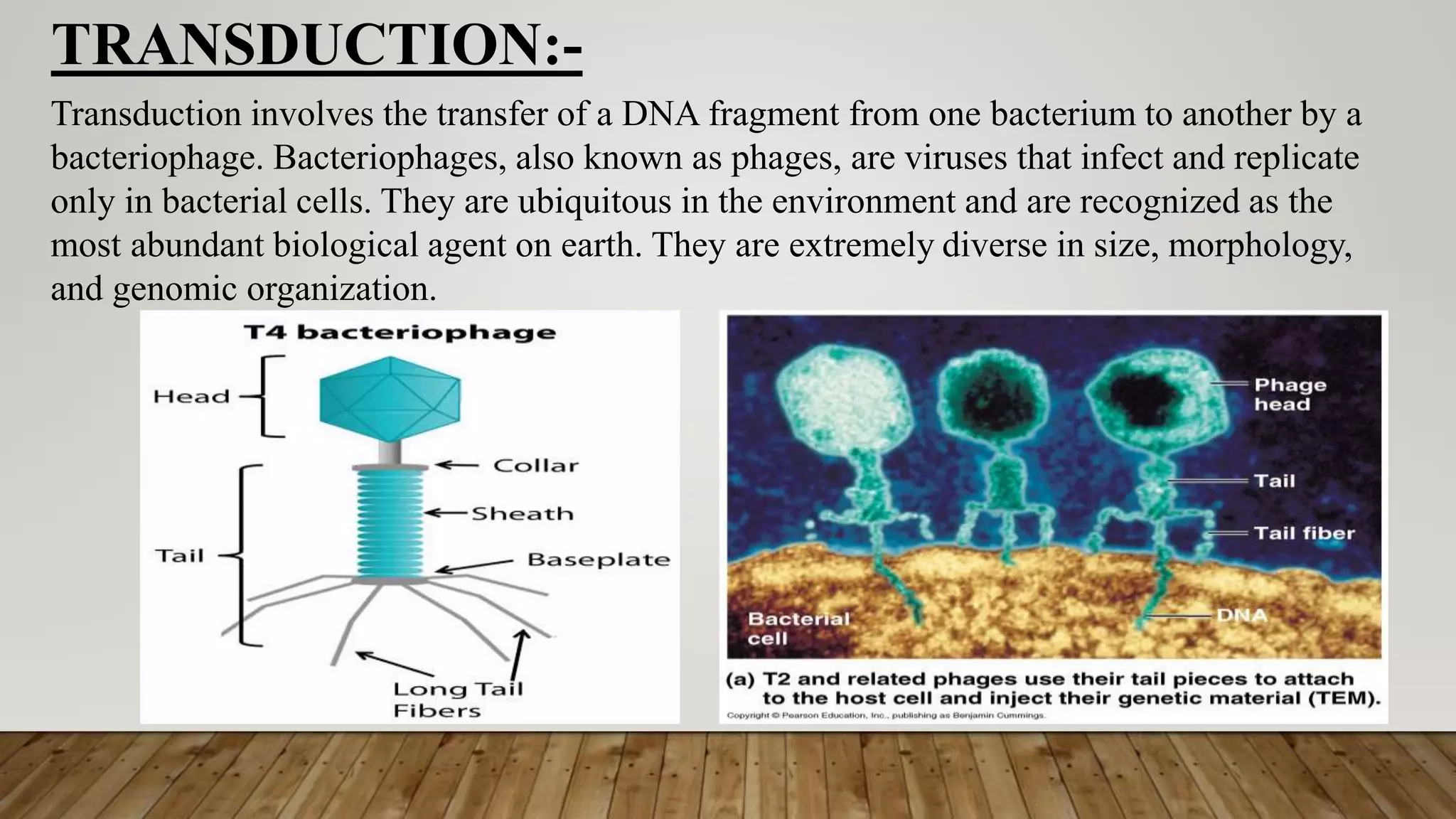This document provides information about horizontal gene transfer through various mechanisms like transformation, transduction, and conjugation. It discusses that horizontal gene transfer is the transmission of genes between organisms independently of vertical descent or reproduction. The key mechanisms of horizontal gene transfer in bacteria are transformation (uptake of naked DNA from environment), transduction (transfer via bacteriophages), and conjugation (direct cell-to-cell contact via plasmids or pili). Horizontal gene transfer plays an important role in the evolution and adaptation of bacteria by allowing them to acquire new traits from other species.
















